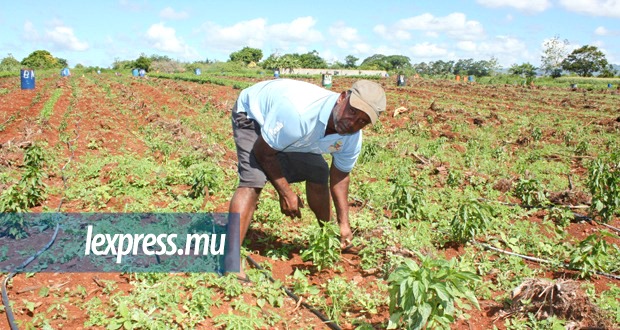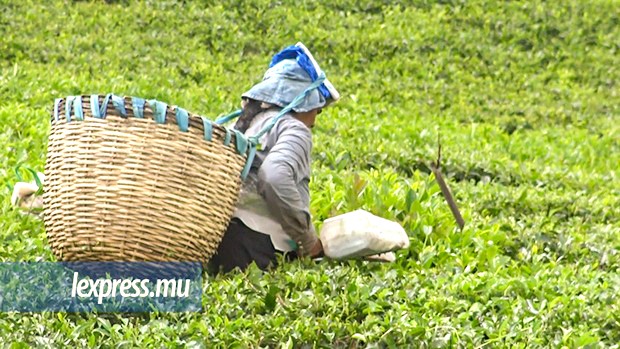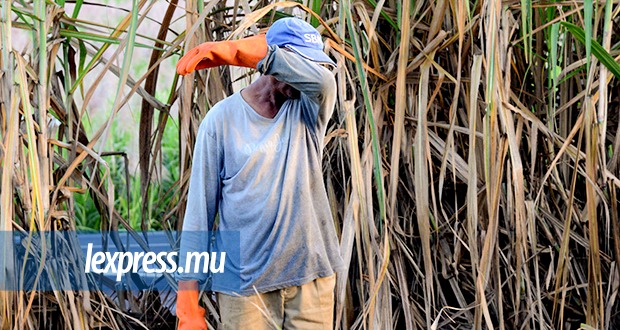Publicité
Budget 2021-2022: has leasing state lands to small planters really helped food security?
Par
Partager cet article
Budget 2021-2022: has leasing state lands to small planters really helped food security?

The budget has announced 1,000 arpents to be sub-leased by Landscope to small planters to boost agricultural production. The state leasing out lands to grow food and other crops is not a new idea. The question now is: what is the track record of the government like, when it gives out state lands in this way? Does it, in fact, work?
1) The budget and Landscope
The finance minister, Renganaden Padayachy, announced in the Budget that the government would be stepping up the sub-leasing of land to small farmers through Landscope’s Centralised Digital Land Bank. “The government will make available some 1,000 ar pents of land to private growers with a view to boosting agricultural production.” In terms of hectares that comes to just over 341 hectares.
“This is a laudable step and a way to utilize the land rather than just let it stay idle,” Salil Roy, president of the Planter’s Reform Association, tells l’express, “The big issue now is that people just cannot afford to buy land to grow things.”
The problem that the scheme aims to resolve is the conundrum that the Mauritian economy is in: it spends over Rs 40 billion to import over 80 percent of its food, and yet each year since 2016 has seen an average of 1,700 hectares of land being lost to agricultural production.
This would be the second such sub-leasing by Landscope to small farmers. Earlier this year, it completed the transfer of 350 arpents (just over 119 hectares) in an earlier phase of the scheme. “Since this has been done recently, there has not been enough time to see what has happened, nor is it clear what the land will be used to grow, some of the planters are looking to grow things like bananas, manioc, or potatoes,” says Kreepalloo Sunghoon, secretary-general of the Small Planters Association.
Whether the government’s latest bid to boost agriculture will succeed depends on where and for how long these sub-leases are being given out. “A lot of these lands are relatively poor lands that need to be re-fertilized in areas such as Midlands, Cluny or Rose-Belle, some of these are in areas with heavy rainfall; others are lands previously covered by forests with thin topsoil,” explains Sunghoon. This is important because making those soils fertile again would require time, effort, and funds.
The problem, however, is that the sub-leases offered by the government are limited to a maximum of 10-year terms. What essentially happens is that Landscope itself is leasing lands on 10-year terms from private landowners and other state entities and sub-leasing them in turn.
“Many of these people are getting leases on five-year terms, which is simply not long enough,” explains Sunghoon, “Mauritian land is generally poor, yields are great for the first and second har vests but then for the third year they tend to drop, so you need to give the land a break and invest in keeping up its fertility through investing in irrigation, waterworks and power infrastructure on the land; offering leases on such short terms means that there is little incentive for such investments by small far mers to rehabilitate that land. Take hydroponic agriculture, for example, it’s impossible on such terms because you need between 12 to 15 years to make it economically viable.”
It is a problem that Eric Mangar, an agronomist who heads the Movement for Food Security, sees as well. “Having such leases coming to an end so soon means there is no incentive to put much into the land and make it productive, particularly in areas where there the land is on slopes or rocky which takes even more cost and effort.”

2) Old wine, new bottle
The land bank used by Landscope to sub-lease out these lands is less of a novelty than first appears. In fact, the concept itself is basically a rehash of previous projects that subsequently ran out of steam. In fact, the digitised land bank at Landscope is quite similar to the Land Administration, Valuation and Information Management System (LAVIMS) under the Ministry of Housing and Lands. LAVIMS was started back in 2008 with the ambitious goal of creating a massive database of all the plots of land in the country, assigning parcel identification numbers (PIN) to each plot of land to help value and tax land as well as better manage state lands given out on lease.
Officially launched in 2011, the system soon ran out of steam. By December 2020, the government has ended up spending Rs 900 million to set up the project, but it did not record all the land owned by the state, nor did it start valuing the land for taxation purposes.
In 2018, the government pledged to revamp the LAVIMS project, but it ended up doing nothing. The digitised land bank of Landscope is just another guise of essentially the same project. So too is its mission to parcel out state-owned land to small farmers. The 2016-2017 budget, for example, promised to set up an agricultural land management system under the Mauritius Cane Industry Authority (MCIA), with the mission to “bring unutilised abandoned land of small farmers to productive use”.
3) What happened to state lands under previous schemes?
Regardless of the way the Landscope scheme is structured, the question that remains is: when it comes to leasing out state lands for agriculture to small farmers, what is the government’s real track record?
The answer: not very impressive. Just look at the numbers: the Ministry of Agro-Industry has something like 4,134 hectares of stateowned agricultural lands dotted across the country. Out of this, 893 hectares are not being used, while 3,218 hectares have been leased out to planters and agricultural cooperatives, 51 percent of which was used to grow sugar and 30 percent of it to grow food with the remaining lands being used for tea and livestock rearing. So how was the land being used?
In November 2019, no less than 25 percent of this land was just left abandoned while the remaining 75 percent were in various stages of development. The audit office came out with a specialised report on this issue in June 2020 where it pointed out that even with this 75 percent of land leased by the government to small farmers that was not abandoned, the ministry did not seem to know “how well the land resources were applied to the purposes for which they were granted, and if the produce from these resources was satisfactory”.
In other words, successive governments have been great at parcelling out and leasing out land, but totally useless at figuring out how these publicly owned lands are actually being used.
“Just giving out land and expecting big results won’t work,” says Roy, “people have to be trained how to plant and the government has to be careful in how that land is being used; for example, if too many people end up using these state-lands to grow the same thing, you end up with a glut on the market, driving prices down for that crop and leading to more people stop growing it.”
One problem, he adds, is that the state simply handing out agricultural leases does not solve the perennial problems of small farmers coping with higher labour costs, since few young people want to work in agriculture anymore, and they lack facilities to market their produce without having to be gouged by middlemen.
“The big question is: who is getting these state leases?” asks Sunghoon, “most of the people who have got such state leases have either been political agents or constituents with ties to the government who want to make some money on the side or are inexper ienced people who don’t know what to do once they have the land.”
Therefore, the state leasing out land for agriculture has traditionally not resulted in either increasing agricultural production or boosting food security.
A big reason why the state has such a poor track record when it comes to leasing land for agriculture, explains Mangar, “is that the agriculture ministry does not have enough technical officers to help or monitor what the farmers are doing”.
He is backed by the audit office, which in 2020 said that the survey office of the agriculture ministry had just one full-time land surveyor, three technical officers and a dozen field workers. The result, the report adds, is that the government was only able to survey 35 plots of land that had been, or were going to be leased, by the state in 2019, when it should have been looking at a minimum of 215 plots of land each year.

4) The Britannia experiment
This poor record also extends to pet projects specifically championed by the government. In 2016, the government set aside 66 arpents (22 hectares) of state-owned land in Britannia to encourage bio-farming. Then-agriculture minister Mahen Seeruttun announced on 14 June 2016, that “this land will be equipped with all production infrastructure, including land preparation works, irrigation facilities and other infrastructural facilities and will be made available to potential promoters of bio-farming”.
The government’s pet project came despite many being convinced of the impossibility of true bio-farming in Mauritius. “For that, you need land that is isolated, but the problem is that Mauritius is so small that there are very few areas in the country where water channels do not carry traces of industrial runoff or the wind carries chemicals from fertilisers and pesticides from surrounding fields such as those used to grow sugar,” insists Sunghoon.
Nevertheless, the government pushed ahead and set aside Rs 20 million to start leasing to set up a bio-farming zone in Britannia. This zone was only meant to be the start, the government planned to spread bio-farms across 100 hectares of state land.
So, what happened to Britannia? First, the government did not actually study to see whether the land at Britannia could be used for bio-farming. The 22 hectares of state land in the bio-farming zone was given to 11 promoters starting in 2017.
Two years later, by the end of 2019, out of the 22 hectares given out in Britannia, 13.35 hectares were abandoned, with only 8.65 hectares still being used. The most cited reason for the abandonment of the project? Despite Seeruttun’s promises of delivering water to feed this bio-farming zone, none of that water showed up.
The second most oft-cited reason? It was near a quarry that threw up rock dust over the supposedly bio-farming zone. “In a lot of these cases, the people getting the land were not farmers and simply left the land and took up other jobs after just five or six months,” insists Sunghoon.
Another obstacle: Mauritius just does not produce enough manure to sustain organic farms. “Without chemicals you need manure to change the structure of the soil and encourage bacterial growth to raise soil fertility and water retention,” adds Mangar, pointing out that a 25-kg bag of manure costs Rs75 and you need between one and two tonnes of the stuff to fertilize just one arpent.
In the case of Britannia, “the farms that have survived have no way of marketing their organic produce elsewhere, such as in hotels for tourists who want to eat organic.”
What of the government’s dream of extending bio-farming across 100 hectares of state land? The agriculture ministry did find promising pockets of land in Plaine-Magnien and La Flora, but after the Britannia experiment bottomed out, so too did the government’s bio-farming dream. “This is an on-site business,” insists Roy, “you have to be there and see and direct everything for it to work.”
Britannia is no exception. In fact, virtually every government scheme to give out leases for agriculture has had less than impressive results. Sugar? In 2019, the government had 1,459 hectares of state land leased to grow sugarcane. 17 percent of them – 188 hectares – of which were abandoned. This scheme was not worked to arrest the secular decline of sugar production which, since the sugar crash, has seen an average of 1,600 hectares of sugarcane land being abandoned annually mostly by small planters.
Or take tea. In the middle of 2015, the government wanted to revive tea production in the ex-tea belt to stop the abandonment of tea cultivation by small planters. For that, in 2016, the government put aside 253 hectares of state-owned agricultural land. Out of that, only 94 hectares were finally leased out for tea production to small tea farmers. By the end of 2019, only six hectares were still being used.
It was not just giving out state land to small planters that failed. It did not work as well when the government tried to do the same thing with a big foreign company. A Chinese company, Mauristea, looked to revive the old Dubreuil tea factory that was shuttered in 1999. So in 2015, the government leased the company four hectares and another 43 hectares in 2017 in the hopes that with local tea planters supplying the factory it would mark a revival of the tea industry. The company did nothing with the larger plot of land.
By April 2019, the company pulled out arguing that the costs of producing tea in Mauritius were too high, unless it could source its own tea seeds from China or unless the government supplied them for free. Later that same year, the 47 hectares were taken back by the government, not having been used to grow a single tealeaf.
Publicité
Publicité
Les plus récents






